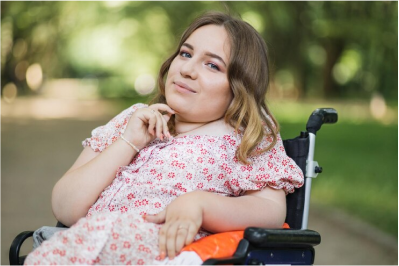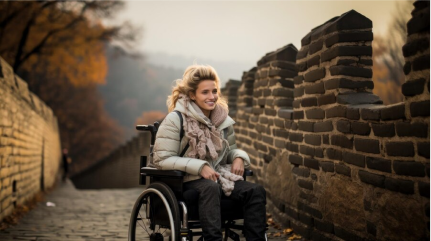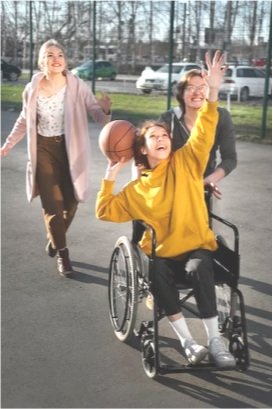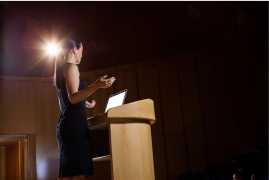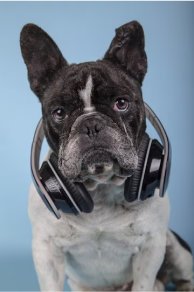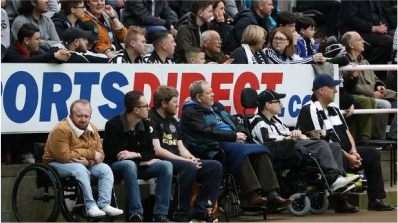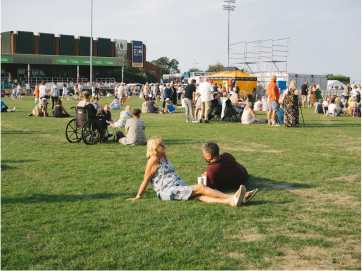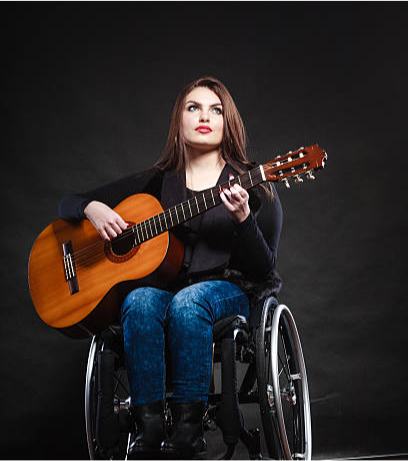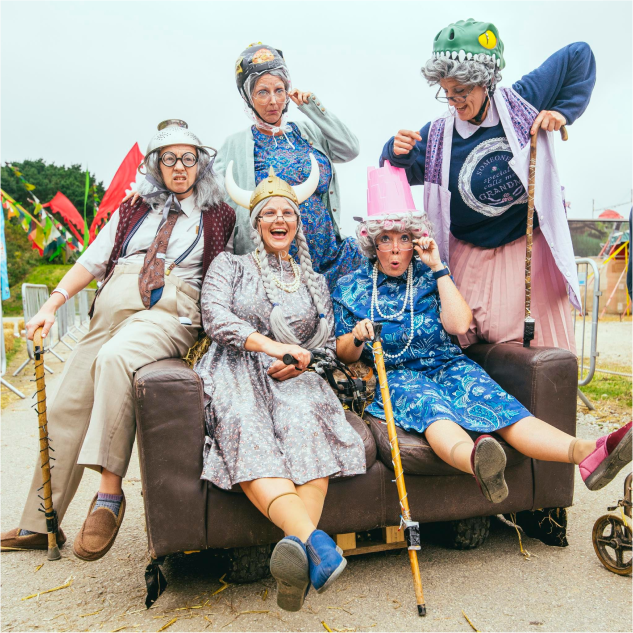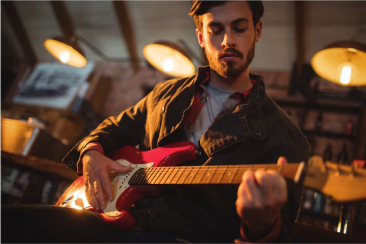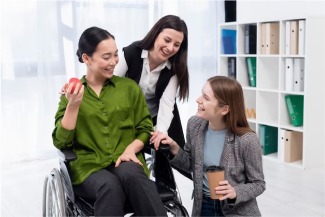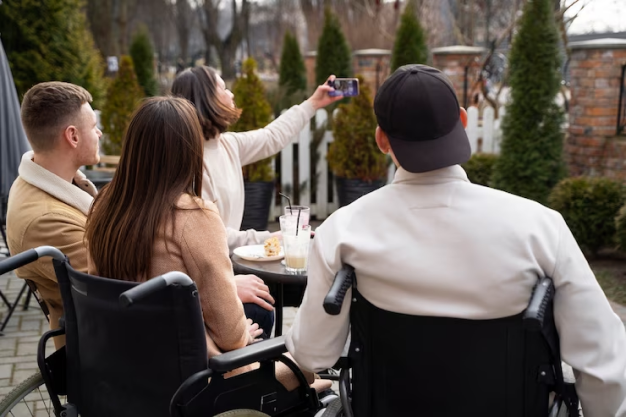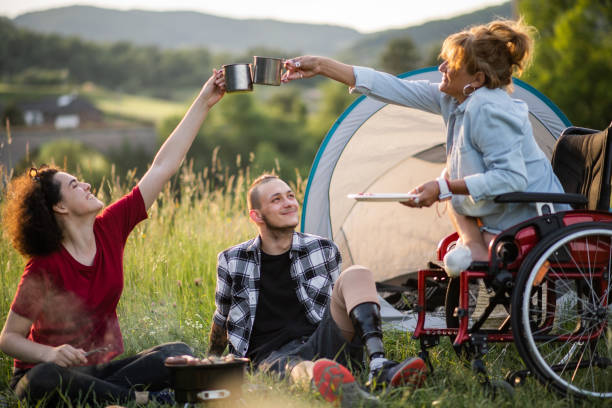Free ways to make your event accessible
With 20% of Australians living with disability, events being all about community and inclusion, and accessibility being a legal responsibility, event organisers want to make their events accessible, but it can be hard to know where to start, especially which options are affordable within a limited budget.
Here we share no and low cost accessibility hacks for events and festivals from the Queensland Governments’ Fact sheet on creating inclusive and accessible events.
People with disability have a keen interest in events, and they belong in the audience. Their needs shouldn’t be seen as a problem or a hassle. A great way to start is to think, ‘These people want to be at our event, so how can we help them enjoy the experience?’
Beyond wheelchair access, accessibility is also for people who have neurodiversity or limited mobility, vision or hearing. Remember, too, that access isn’t just for attendees - it’s also for performers, presenters, participants, and suppliers!
1. Ask people with disability what they want
Remember to check in with your followers and your local disability community to ask what they want or need to enjoy your event. Your Council might have a Disability Advisory Committee that you can ask, or there might be a key local disability organisation who will help you find the right people to talk with.
Check out this awesome video which has great insights from people with a variety of disabilities on what helps them enjoy an event – it is really worth watching!
Video description: several people with different disabilities describe what their needs are at an event, and what helps them have a great time.
At your event be sure to gather feedback from attendees. Add a question about accessibility to your survey, such as, “Were your accessibility needs met? What could we do to improve your experience?”
2. Choose an accessible venue
A venue that has disability parking and drop off points, accessible public transport service, wheelchair access, accessible toilets, microphones, a hearing loop*, and a break out room for those who need a quiet space makes making your event accessible so easy! You should also check that your venue allows assistance dogs, including into eating areas (which is a legal requirement).
*A hearing loop is a loop of wire around a room which acts as an antenna to radiate a magnetic signal from a microphone to hearing aids making the performers easier to hear.
3. Make the event layout accessible
Have your event information booth close to the entrance so people with disability can find it easily.
When you arrange spaces, such as chairs and tables,
leave enough space between them for people who use wheelchairs.
provide seats at the front for people with a hearing disability.
ensure there are enough seats and space for support workers and assistance dogs.
don't group people with disability separately from others but help them feel inclusively integrated.
Make choices that support people with neurodiversity
People with neurodiversity may be hypersensitive to
visual ‘clutter’
bright or fluorescent lights
strong smells
background noise.
Support them by
avoiding brightly coloured or highly patterned furnishings and carpets
avoiding flickering lights and using as much natural light as possible
having strong smelling catering away from event areas
avoiding background noises like generators and ceiling fans
4. Provide great service
The attitude and behaviour of event staff and volunteers is critical to the attendee experience. Provide them with disability awareness training on how to best meet the needs of people with access requirements and achieve customer service excellence – this doesn’t have to be paid training but information such as the dot points below.
Staff don’t have to know what to do in every circumstance – they can simply ask, ‘What do you need?’ A welcoming and helpful attitude, and willingness to take time to listen and help go a long way!
Also, make sure staff at the event are visible, and can be easily identified by those with a visual impairment.
The following comes from Inclusive Tourism: Making your business more accessible and inclusive.
Common courtesies to remember include
focus on the person rather than their disability
address the guest directly, rather than other people with them, and don’t assume others with your guest are their support workers
ask guests with disability if they need any specific support
ask your guest if they want help before providing assistance and accept their answer if they decline
if you have a conversation that will last more than a few moments with a guest who uses a wheelchair, bend to eye level or pull up a chair.
For people who may have a learning difficulty, intellectual disability or brain injury
address them directly, listen carefully, speak clearly with your natural tone of voice (and not loudly or slowly), and check for understanding
use clear language, and avoid complex words or jargon
give them time to ask and answer questions
avoid overloading them with information
reassure your guest that you are there to help if they need to check that they have understood.
For people who have hearing impairment or are deaf
face your guest so they can read your lips. Make sure there are no bright lights behind you that limits their ability to see your lips
use your normal tone of voice and volume
if possible, move away from background noise
address your comments directly to your guest rather than to their sign language interpreter
have a pen and paper on hand to help you communicate
5. Make sure event communications are accessible
Ensure text is formatted to be readable by those with a visual impairment, including colour blindness, especially in relation to font size, font type, layout, and contrast colour. In Microsoft Word, click Check Accessibility in the Tools menu to check for accessibility issues for text-to-audio by screen reader software.
Accessible formats for written information include large print, braille, and Microsoft Word. A pdf format can’t be easily read by a screen reader. On your website, in downloads, and in emails provide information in a Word document or html format, rather than pdfs.
Add alternative text or caption descriptions for images.
Ensure your website and your ticketing platform comply with web accessibility standards.
For videos and PowerPoint presentations,
Ensure videos are captioned and contain audio descriptions so people who are hard of hearing or vision impaired can access essential content.
Provide a transcript of the video in Word, or HTML if it is being accessed online.
If the video is not audio described, have presenters verbalise any important visual elements, such as on-screen graphs and text.
Have any images or photographs in presentations and visual cues, such as a show of hands, described by the presenters.
6. Provide information on your event’s accessibility
People with disability want to know in advance how their needs will be met at your event. On your website, including a page that provides all the information about the event’s accessibility, such as Bathurst Winter Festival’s accessibility page. Include information on nearby accessible public toilets if necessary.
Ensure your program and site map both include information for people with access needs, such as which performances are captioned or interpreted (live captioning is accessible for more people than sign language interpretation, such as elderly people who are hard of hearing but haven’t learned sign language).
In printed (online and in print) and spoken (radio, TV) ads for your event, be sure to mention that the event will be accessible, and details are on your website.
When you sell tickets or have people register, be sure to include the option for attendees to provide information on their access or support requirements to participate fully in the event.
7. Other tips
If group activities are planned, such as workshops, consider the needs of people with disability so everyone can participate fully and inclusively.
Provide food choices to cater for dietary needs, such as celiac (gluten-free), and lactose intolerant (dairy-free). (To be inclusive, it’s a good idea to also provide options for those with cultural needs as well, such as halal and plant-based).
Provide water for assistance dogs.
8. Apply for grants
Some accessibility comes at a cost, such as providing interpretation, live captioning service, or hiring a wheelchair ramp or lift for the stage. Fear not – there is probably a grant for that!
9. Be an accessible ‘employer’
Consider thoughtfully how your volunteer and employed roles can be made accessible for people with various access requirements. Consider providing internships so people with disability can learn new skills.
Ask all staff and volunteers about their access requirements and provide any reasonable adjustments required.
Brief all staff and volunteers about the event’s accessibility elements, to ensure they are comfortable supporting people to access the event.
Over to you
What’s your accessibility tip for other event organisers? We’d love to hear!
Take a deeper dive
Access and Inclusion Plan Template
Ready to write up a plan for how you’ll go about improving your event’s accessibility over time?
We have a template that makes that planning easy, developed with the support of an accessible events expert.
Responsible event training
Ready for a deeper dive into how your event can become more inclusive and sustainable as well?
Our Responsible Events training module covers
Supporting your environment and the planet
Creating a socially inclusive event
Extending the economic benefits of your event



